

16 11 23 27 How To Break The Rules And Delight Customers - Shep Hyken, Shepard Presentations Tackling Human Capital Management Challenges Through Analytics And Metrics - Frank Diassi, Unicorn HRO Attitude Over Aptitude - John Tschohl, Service Quality Institute Balancing Autonomy And Expectations In Remote Teams - Ayanna Kelly, The Rise Journey MAY 2023 • Vol.22 • No.05 FOSTERING A HIGH-PERFORMANCE SALES CULTURE Learn what it takes to reinforce a culture of positivity and optimism
Casey Cunningham, CEO/Founder, XINNIX (ISSN 2564-2057)
-
Understanding
- Jamal Jivanjee, Author, jamaljivanjee.com


Articles 09 Remote Workforce: A Manager’s Guide To Decision-Making Tips to help organizations avoid falling into the trap of groupthink and achieve better outcomes - Tamara Sanderson, Co-Founder, Co-Teacher and Co-Author, Remote Works 13 Mentoring Millennial And Gen Z Employees: Dos and Don'ts Mentoring millennials or Gen Z employees in today’s workplace requires a strategic approach - Asim Hafeez, Owner and Operator, Empower Energy Solutions
Cultivating A Peaceful
Productive Culture: Embracing Conflict Is Key
19
And
the six core human desires
25 Digitizing The Handshake: 4 Benefits Of Digital Business Cards
lasting connections
Making
A High-Performance
Culture
of
and
07 On
INDEX HCM Sales, Marketing & Alliance Excellence
2023 Vol.22 No.05 ( ISSN 2564-2057)
- Sharat Potharaju, Co-founder and CEO, Beaconstac Fostering
Sales
Learn what it takes to reinforce a culture
positivity
optimism - Casey Cunningham, CEO/Founder, XINNIX
the Cover
MAY
How To Break The Rules And Delight Customers
Empowering employees and redefining customer service


- Shep Hyken, Customer Service and Experience Expert and Chief Amazement Officer, Shepard Presentations
Tackling Human Capital Management Challenges Through Analytics And Metrics

Key metrics HR team can gain from an HCM solution

Attitude Over Aptitude
Customer contact employees must possess and practice a positive attitude
- John Tschohl, Founder and President, Service Quality Institute
Top Picks 11 16 23 27
Balancing Autonomy And Expectations In Remote
A few tips to follow
Teams
- Ayanna Kelly, HR & DEI Product Manager, The Rise Journey
- Frank Diassi, Chairman, Unicorn HRO
INDEX
HR.com makes HR Professionals smarter and we are sure your solutions do as well.
That being said, we understand how hard it is to market in the Human Capital space, get the attention of your target audience and show HR departments that you are a valuable resource. So, how do you overcome this hurdle?
Easy. Work with HR.com.
With over 19 years experience working with HR solution providers, we give over 1,200,000 HR professionals access to the tools and resources they need to succeed. We work side-by-side with HR solution providers to help them generate sales leads, grow market share, build brand awareness and promote industry expertise.
Checkout our growing list of tools and resources our vendors can take advantage of to get noticed by HR professionals!
HR Marketing Institute
The HR Marketing Institute (HRMI) is the ONLY community of Marketing Professionals in the Human Capital space dedicated exclusively to the issues and needs of the marketing professionals and their businesses. This is a community of Marketing professionals who dedicate their time to marketing in the Human Capital space and who support each other to make the right decisions so that your marketing initiatives deliver the impact you need to succeed. Membership includes networking with peers, face to face summits, webcasts, research and benchmarking tools.
Webcasts and Virtual Events
Thought Leadership, Lead Generation and Educational Content
HR.com’s Webcasts and Virtual Events are more than an exercise in brand awareness. They are a comprehensive and groundbreaking way of generating tangible sales leads, while showcasing you as an industry authority to a captive audience of clients, prospects and the entire HR.com global community, giving you a greater market reach. In addition, HR.com’s one-hour webcasts provide valuable education and certification credits for today’s forward-thinking HR professionals.
Research
Attn: HR Solution Providers!
Build your brand, content marketing strategies, and thought leadership with exclusive HR.com research. Choose between custom featured research or state-of-the-industry research sponsorship. With custom featured research, we work with you to develop research on the topic of your choice or align your brand with any of this year’s State of the Industry hot topics to highlight the latest HR trends. No matter which research strategy you choose, come away with your very own branded research report and infographic, establish yourself as an industry thought leader by presenting a webcast, get key insights from the opinions of highly qualified HR professionals, and maximize your ROI, and build a healthy sales funnel with over 1,000 qualified leads.
Managed Email Campaigns
Looking to expand your marketing reach? Build long-term customer loyalty? Generate high response rates? Drive website traffic? The value of HR.com’s opt-in direct email program allows you to do just that. Nurture potential buyers on a consistent basis through our managed campaign program. Deliver your message directly to HR decision makers’ inboxes. HR.com’s direct email lists are 100% optin, GDPR, CASL, and CAN-SPAM compliant and contain only the most exclusive names and companies in the human capital industry.
Online Advertising
Onsite advertising is a great way to reinforce brand and profile new products associated with a product launch. HR.com offers a variety of online advertising solutions including banner ads and premier homepage positioning making it a cost-efficient option for maximum brand exposure.
Buyer’s Guide
Be the Answer to the Questions HR Decision Makers are Asking

The HR.com’s Buyer’s Guide is where HR departments from around the world turn first when they need products and services. Put your company at the top of their list and get listed with the resource that HR professionals and decision makers trust.
Excellence Publications Interactive Targeted Learning ePublications
Aimed at Reaching Your Core Audience
HR.com’s 12 targeted and focused monthly online publications provide an invaluable collection of high-quality HR content and experts’ solutions to our members. Ten of our publications now feature themed editions that focus on specific topics. Sponsorship of research reports and webcasts aligned with the themes are also available.
For more information phone: 1.877.472.6648 | email: sales@hr.com | www.HR.com
Exclusive HR.com research
Our solutions will get you more clients, brand exposure, sales –and a marketing community too!
Editorial Purpose
Our mission is to promote personal and professional development based on constructive values, sound ethics, and timeless principles.
Excellence Publications
Debbie McGrath CEO, HR.com - Publisher
Sue Kelley Director (Product, Marketing, and Research)
Babitha Balakrishnan and Deepa Damodaran Excellence Publications Managers and Editors
HCM Sales, Marketing & Alliance Excellence Team
Deepa Damodaran Editor

Koushik Bharadhwaj Jr. Editor
Arun Kumar R Design and Layout (Digital Magazine)
Chandra Shekar A K Magazine (Online Version)
Submissions & Correspondence
Please send any correspondence, articles, letters to the editor, and requests to reprint, republish, or excerpt articles to ePubEditors@hr.com
For customer service, or information on products and services, call 1-877-472-6648
HCM Sales, Marketing & Alliance Excellence (ISSN 2564-2057)
 Debbie Mcgrath Publisher, HR.com
Deepa Damodaran Editor, HCM Sales, Marketing & Alliance Excellence
Debbie Mcgrath Publisher, HR.com
Deepa Damodaran Editor, HCM Sales, Marketing & Alliance Excellence
Unleashing the Power of Culture and Attitude for Business Success
Asper a recent study by Harvard Business School, organizations with robust cultures experienced a staggering 756% increase in net income over an 11-year period. In stark contrast, other organizations witnessed a meager 1% growth!
These numbers hold particular significance for sales leaders navigating the current challenging business landscape marked by inflation, volatile demand, and various external factors. Now, more than ever, it is imperative for business development executives to foster a culture of unwavering positivity and optimism.
This type of culture goes beyond mere buzzwords; it cultivates higher levels of employee engagement, enthusiasm, accountability, and ownership, which in turn, maximizes sales performance. To shed light on building and nurturing a high-performance culture, Casey Cunningham, the CEO and Founder of XINNIX, outlines five crucial strategies in her article, Fostering A High-Performance Sales Culture
As a business owner or executive, when seeking to hire exceptional talent, it's crucial to reevaluate your priorities. Does a resume adorned with degrees and an impressive employment history hold more weight than other essential qualities?
In his thought-provoking piece, Attitude Over Aptitude, John Tschohl, an expert from the Service Quality Institute, emphasizes why employers must prioritize attitude over aptitude in their hiring decisions.
Furthermore, customer service and experience guru Shep Hyken's article, How To Break The Rules And Delight Customers, unveils the significance of empowering employees as a means to redefine customer service and surpass expectations.
The convergence of these articles underscores a fundamental truth in the modern business landscape: cultivating a thriving culture, prioritizing attitude, and empowering employees are pivotal to achieving unparalleled success. As we navigate the challenges ahead, let us embrace these insights and harness their transformative power to drive our organizations towards a prosperous future.
That is not all. We also bring you a few other expert columns, in this edition of HCM Sales, Marketing & Alliance Excellence and hope these will help you achieve excellence in your sales and marketing efforts.
Happy Reading!
HR.com
56 Malone Road, Jacksons Point, Ontario L0E 1L0
Internet Address: www.hr.com
Disclaimer: The views, information, or opinions expressed in the Excellence ePublications are solely those of the authors and do not necessarily represent those of HR.com and its employees. Under no circumstances shall HR.com or its partners or affiliates be responsible or liable for any indirect or incidental damages arising out of these opinions and content.
EDITOR’S NOTE
OR For Advertising Opportunities, email:
Copyright © 2023 HR.com. No part of this publication may be reproduced or transmitted in any form without written permission from the publisher. Quotations must be credited.
sales@hr.com
is published monthly
by
Limited,
Subscribe now for $99 / year And get this magazine delivered to your inbox every month Become a Member Today to get it FREE! SIGN UP Write to the Editor at ePubEditors@hr.com
In a world of unparalleled challenges (global pandemic, racial injustice, political rivalry, digital 4.0, emotional malaise), uncertainty reigns. Finding opportunity in this context requires harnessing uncertainty and harnessing starts with reliable, valid, timely, and useful information. The Excellence publications are a superb source of such information. The authors provide insights with impact that will guide thought and action.
Rensis Likert Professor, Ross School of Business, University of Michigan Partner, The RBL Group



Excellence publications are my ‘go-to’ resource for contemporary and actionable information to improve leadership, engagement, results, and retention. Each edition offers rich and diverse perspectives for improving the employee experience and the workplace in general.


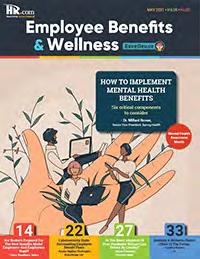


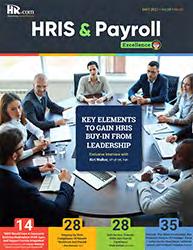

I regularly read and contribute to Leadership Excellence and Talent Management Excellence. I use many of the articles I read to augment my own presentations and I often share the articles with my clients. They are always quick, right on target for the latest issues in my field, and appreciated by my clients. If you want to stay up to date on the latest HR trends, choose a few of the different issues from the Excellence series of publications.
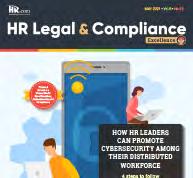


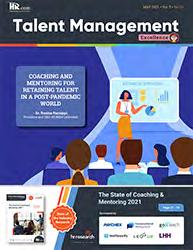
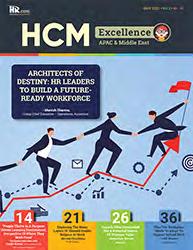
 Dave Ulrich
Julie Winkle Giulioni
Author, Virtual /Live Keynote Presenter, Inc.’s Top 100 Leadership Speakers
Dr. Beverly Kaye CEO, BevKaye&Co.
Dave Ulrich
Julie Winkle Giulioni
Author, Virtual /Live Keynote Presenter, Inc.’s Top 100 Leadership Speakers
Dr. Beverly Kaye CEO, BevKaye&Co.
WHY EXCELLENCE PUBLICATIONS?
We’re eager to hear your feedback on our magazines. Let us know your thoughts at ePubEditors@hr.com
Fostering A High-Performance Sales Culture
Learn what it takes to reinforce a culture of positivity and optimism
By Casey Cunningham, XINNIX
These numbers are particularly important for sales leaders to ponder, especially right now. Many of them are facing a challenging environment due to inflation, fluctuating demand, or other factors. Whatever the cause, their business development executives must reinforce a culture of positivity and optimism.

This kind of culture delivers greater levels of employee engagement, excitement, accountability and ownership, and ultimately maximizes sales performance.
Following are ways to build and nurture a highperformance culture:
Is it true that great cultures have better results? Well, research indicates that when companies want to bolster their results, they should ensure that their workplace culture is truly motivating their people.
For example, a Harvard Business School study of 200 companies revealed that those with robust cultures had the highest increase in net income. Over 11 years, that income rose by 756%, while other organizations saw only a 1% increase.
Connect Tiers to a Larger Purpose
typical sales team includes people at several different tiers of engagement —
● Tier One (unengaged and non-committed),
● Tier Two (can be impacted),
● Tier Three (more “neutral”),
● Tier Four (looking to grow) and
● Tier Five (fully engaged true believers).
Submit Your Articles HCM Sales, Marketing & Alliance Excellence presented by HR.com May 2023 7
COVER ARTICLE
With the exception of Tier Five employees (about 11%) and Tier One (13%), 76% of the team are “up for grabs”, and leaders must tailor their communications segment by segment. The goal with each segment is the same, though — connect them to a larger purpose, and strengthen their internal drive to heighten everyone’s collective success.
Eliminate Fear, Uncertainty and Doubt
When individuals are in sales leadership positions, they set the tone. Their employees scrutinize every action and word, especially during uncertain times. Effective leaders confront their own worries, assuage them with facts and data, and move ahead with transparency and confidence.


Focus on the Opportunities
Great sales leaders often view a downturn as a time that is actually good for business, causing individuals to shine in unexpected ways. They mask the negative noise with a drumbeat of positive messages via email, Zoom, in person and everywhere. As Napoleon Hill (Think and Grow Rich) once said, “Whatever the mind can conceive and believe, the mind can achieve.”
One Message Every Day
Some outstanding sales leaders send a positive message to their teams every single morning — consistently fostering that all-important optimism. Others make it a practice to share customer thank
you notes, reinforcing employees’ love for and pride in their companies and even swaying naysayers.
Smooth the Rough Edges
Great sales leadership skills do not come naturally to everyone, but they can be developed and honed. The most effective leaders are vulnerable, transparent, patient, kind, truthful and forgiving — embracing their people’s talents and allowing them to “fail forward” without fear of reprisal. Companies should prioritize sales leadership training and coaching to develop individuals’ strengths, close gaps, and smooth rough edges.
Mark Miller, Vice President of High-Performance Leadership, Chick-fil-A Inc., and a noted business book author has written, “Your culture can be soul enriching or soul crushing.” Effective sales leaders are intentional about the cultures they develop, and the result is peak performance.
Submit Your Articles HCM Sales, Marketing & Alliance Excellence presented by HR.com May 2023 8
Fostering A High-Performance Sales Culture
to comment?
Casey Cunningham is CEO/Founder of XINNIX
Would you like
Remote Workforce: A Manager’s Guide To Decision-Making
Tips to help organizations avoid falling into the trap of groupthink and achieve better outcomes
By Tamara Sanderson, Remote Works
Wehave all been there: That meeting that feels like it has happened before. The decision that keeps getting passed around like a hot potato. The reappearing agenda item that makes you want to scream.
But what if I told you this was natural? It is a part of human nature.
According to applied psychologist Susan Weinschenk, Ph.D., we all have faulty wiring when it comes to decision-making.
Let us take groupthink, for example. Every day, countless organizations across the globe, sitting in virtual Zoom rooms and physical conference rooms, come together for an intended purpose: making a decision. However, few of these groups are set up for success.
To demonstrate this issue, researchers Andreas Mojzisch and Stefan Schulz-Hardt set up an experiment: a group would be deciding on prospective job candidates. They found that individuals made far better decisions when they received candidate
information first, before hearing the preferences of others in the group. When individuals learned the other group members’ preferences first, their decision-making suffered.
According to Weinschenk:
The researchers concluded that when a group of people starts a discussion by sharing their initial preferences, they spend less time and less attention on the information that is available outside of the group’s preferences. And they, therefore, make a less-than-optimal decision.
In a follow-up study, Mojzisch and Schulz-Hardt reached the same conclusion about face-to-face meetings. To make the best decision, individuals needed to share their unique information about job candidates before sharing their initial preferences.
While this is an interesting insight, it is rarely put into practice. According to Weinschenk, 90% of group discussions start off on the wrong foot— discussing initial preferences rather than salient information to the decision.
Submit Your Articles HCM Sales, Marketing & Alliance Excellence presented by HR.com May 2023 9
How can you ensure your organization does not fall into this pernicious trap?
Review Information Asynchronously First
Give people time to review and assess information on their own first. You may consider using polls, surveys, or other research methods to capture individuals’ thoughts and responses before any group discussions. This encourages everyone to come up with their own solutions regardless of their level of extroversion or influence over the group.

Meet Only if Necessary (Especially for Remote Teams)
Only meet if a live conversation is critical to getting buy-in on a decision. Focus the discussion on the supporting evidence, not the preferences of the group.
Document All Other Options and Rationale
Document the decision you have moved forward with and the ones you have decided to table. This creates an archive of your decision-making history so that colleagues can revisit the logic later on.
Have an Experimental Mindset
Not all decisions need to be final. Try prototyping options if the way forward is unclear. Set a clear timeframe and success metrics to compare the options you are testing.
Send a Post-Mortem Summary
Communicate the results of the decisions to the people affected and the wider team. Summaries can include a problem statement, the goal, criteria for the decision, alternatives suggested, experiment details (if any), results, and metrics to measure. If it is a contentious decision or a highly sensitive topic, check in with your team members afterward.
Tamara Sanderson is the Co-Founder, Co-Teacher, and Co-Author of Remote Works. Her mission is to liberate teams from the traditional nine-to-five approach to working and teach them how to do their best work anytime, anywhere. Her new book with co-author Ali Greene, Remote Works: Managing for Freedom, Flexibility, and Focus, is the ultimate playbook for managing remote teams.
Would you like to comment?

Submit Your Articles HCM Sales, Marketing & Alliance Excellence presented by HR.com May 2023 10
Remote Workforce: A Manager’s Guide To Decision-Making
How To Break The Rules And Delight Customers
Empowering employees and redefining customer service
By Shep Hyken, Shepard Presentations
There is a massive benefit to empowering employees to “break the rules” for their customers. And what I mean by “breaking the rules” is to consider what you can do for a customer outside of the norm that does not cost the company money, is not illegal or immoral, and will not hurt “business as usual.” In reality, employees are not breaking any rules. They are finding ways to take care of the customer while not breaking the “rules” mentioned above.
Many companies train their employees in what they cannot do for customers. They have “rules” that have little or no flexibility. While it is essential for employees to be trained on what they should not do, it may be more important to train them on what they can do. By that, I mean how far employees are allowed to go before they have to say “No.”

I call this The Line in the Sand concept. It is important to draw that line, which is the boundary that employees are not allowed to cross, but at the same time, teach them what they can do to get right up to the line.
For example, I have a client in the luxury automobile market. This client has a team that travels to auto dealerships to help dealers with demanding customers they cannot seem to please. Members of this team believe in the power of saying “Yes” instead of “No.” They have the authority to refund the entire price of the car, even if it is 10 years old. That is their line in the sand – their last resort. They can get right up to it but cannot go past it. And by the way, they have never made it to that last resort. They have always found other ways to make discontented customers happy without getting to that line.
Submit Your Articles HCM Sales, Marketing & Alliance Excellence presented by HR.com May 2023 11
TOP PICK
The key is training, but it is not just imparted in one session to tell employees what to do – or not do. It is about continuously sharing stories of what other employees are doing to meet customers’ needs and demands, all without crossing the line in the sand. When an employee does something right, congratulate them and share the example with others. And if they do something wrong, or in other words, if they cross the line, turn it into a learning opportunity that is also shared with others. Routinely sharing examples helps employees recognize their opportunities to delight their customers.

Some examples of “breaking the rules” might be honoring a warranty that expired a month ago – or stretching a 14-day return policy to the 15th or 16th day. Some retail organizations, like Nordstrom, have an easy, no-questions-asked return policy. Even though the employees at Nordstrom are not breaking the rules, the customer feels as if they are going above and beyond. That is all this really is. Making
customers feel like you are on their side, willing to be flexible and giving them reasons to say, “I will be back!”
Shep Hyken is a Customer Service and Experience Expert and the Chief Amazement Officer at Shepard Presentations. He is a New York Times bestselling author and has been inducted into the National Speakers Association Hall of Fame for lifetime achievement in the speaking profession. Shep works with companies and organizations that want to build loyal relationships with their customers and employees.
Would you like to comment?

Submit Your Articles HCM Sales, Marketing & Alliance Excellence presented by HR.com May 2023 12
How To Break The Rules And Delight Customers
Mentoring Millennial And Gen Z Employees: Dos and Don'ts
Mentoring millennials or Gen Z employees in today’s workplace requires a strategic approach
By Asim Hafeez, Empower Energy Solutions
Today’s workforce is quickly becoming dominated by Millennials and Generation Z employees. According to studies, 56 million (or 35% of) Millennials are in the US workforce, but by 2030, roughly 30% of the workforce will be Gen Z.
While the exact parameters are up for debate, most agree that Millennials were born between 1983 and 2000. Gen Z workers are considered those born between 1997 and 2013, which includes some overlap with the Millennial generation. These generations of workers have specific and unique characteristics, desires, needs, and approaches to work that businesses will want to consider when employing them.
With a thoughtful approach, Millennials and Gen Z workers can be well-mentored and become some of the most productive
and successful employees within an organization. Here are some tips for mentoring your younger employees.
Why Mentor Millennials and Gen Z Employees?
Simply put, Millennials and Gen Z employees are the future of today’s workplace. These generations are the ones who will take the reins from Gen X and Baby Boomer employees, furthering innovation and becoming leaders of the future. In fact, many of them are already surpassing their predecessors in terms of business success and leadership abilities.
Millennials and Gen Z workers make for amazing employees, as long as you take the time to explain the motivation and meaning behind their directives. These generations of employees are very interested in the “why” behind actions.
Millennials and Gen Z Employees Want a Win/ Win
Millennials and Gen Z workers are empathic to all perspectives in business — even the businesses’ perspective — and they are consistently looking for ways for all people to come out ahead in the end. When mentoring these groups, nurturing this desire for “win/win” in business can only uplift productivity and, ultimately, the businesses’ overall success.
Heavier Lifting Upfront
Because Millenials and Gen Z workers like to know the “why” behind tasks and processes, it may require a “heavier lift” from management upfront. Many leaders may be hesitant to do this upfront work, preferring a more antiquated approach of being instructed only on what to do — and how to do it — by their boss.
Submit Your Articles HCM Sales, Marketing & Alliance Excellence presented by HR.com May 2023 13
However, being willing to put that extra effort into explaining the “why” behind the process or task can yield much better buy-in and engagement. After putting in the time to explain the reason for a task, these generations can better grasp the core essence behind their work, which is far more preferable to most than just having a staff of workers completing tasks without reason or nuance.
Meeting Their Needs
Compared to the previous generations, such as Gen X and Boomers, the hierarchy of needs that guide the work ethics of Millennials and Gen Z workers differ significantly. While their predecessors were often motivated to work hard to provide for basic necessities like food, the priorities of younger generations are more nuanced.
When mentoring these younger generations, it is important to tap into these different needs in order to help them reach their full potential.
For example, Millennials and Gen Z may feel more comfortable with their basic needs being met but may have concerns that their careers are meeting their emotional needs. They are seeking deeper fulfillment from their jobs and higher levels of personal satisfaction with the work that they do.
Millennials and Gen Z workers value fun, connection, and strong work culture. These are things the company — and mentors within the company — will have to consider with these generations to keep them engaged and, ultimately, retain them as employees.

Add Value to the Employee’s Life
The ultimate goal of a mentor — regardless of the age of the person they are mentoring might be — is to add value to their life in some way. Today’s Millennials and Gen Z employees are looking for more out of their work than just pay.
A mentor for these generations should expect to be there for those employees for needs outside of just the “work stuff,” which could include paying for continuing education programs or bringing in outside consultants to give workshops on things like investing or financial literacy. Today’s mentors need to be plugged in outside of teaching employees how to simply “do the work”.
Submit Your Articles HCM Sales, Marketing & Alliance Excellence presented by HR.com May 2023 14 Mentoring Millennial And Gen Z Employees: Dos and Don'ts
Care is the Most Important Piece of the Puzzle
Today’s Millennial and Gen Z employees want to know that their leaders care about them — beyond what those employees offer as workers. Successful mentorships of these employees go beyond the business transactional interactions.

The best mentors add this value without expecting anything
in return since they mentor others out of pure, genuine care. While mentors serve as excellent sounding boards and advice-givers for the younger generation of employees, care is the most important part of the mentor/mentee relationship.
Mentoring employees is the process of issuing a challenge to them to become the people who
know, deep down, they can be — the person we saw when they were hired. The job of a mentor is not to look at people as who they are on a surface level (in this case, a Millennial or a member of Gen Z) but as who they can become with strong mentorship. When looking at employees with eyes of potential, we can help create the next generation of strong leadership.
Would you like to comment?

Submit Your Articles HCM Sales, Marketing & Alliance Excellence presented by HR.com May 2023 15
Asim Hafeez is the Owner and Operator of Empower Energy Solutions . He is also the Owner of Bamboo Tech and Apex Construction. He is a real estate and early-stage growth investor and is a GP or LP in over 45 companies.
Mentoring Millennial And Gen Z Employees: Dos and Don'ts
Tackling Human Capital Management Challenges Through Analytics And Metrics
Key metrics HR team can gain from an HCM solution
By Frank Diassi, Unicorn HRO
Human capital management (HCM) solutions have become indispensable – making life easier for human resources (HR) staff as they reduce day-to-day paperwork and streamline business processes.
Such a solution can help HR staff perform a variety of functions, from benefits administration to payroll, as well as recruiting and job training, all-in-one centralized system. It can also help managers track and assess metrics, and determine trends regarding new hires, employee retention, revenue, and performance.
Understanding the functions offered by an HCM solution and the metrics that can be measured enables managers to make better
business decisions based on detailed insights and analytics.
Below are key metrics your HR team can gain from an HCM solution:
New Hires and Employee Turnover
New hires can tell HR staff a lot about whether their company is doing the right things to attract new talent. Using an HCM solution to track the main reasons why new hires choose to work for a company can be especially valuable. Moreover, an HCM solution can also be used to track why some new hires decide to leave after being on the job for only a short time. By assessing these factors, HR staff can ensure that the most talented staff are being hired and that they stay
at your company. Doing so will also help HR staff cut down on recruitment and training costs.
PTO and Employee Sentiment
Tracking vacation and personal days is important to help managers make better scheduling decisions and ensure projects are handled appropriately. It can also offer a look into team engagement.
If employees are frequently absent, it could be a strong indicator of dissatisfaction and potential turnover. Analyzing paid time off (PTO) trends can help HR personnel stay apprised of employee sentiment and productivity. Importantly, personnel can address any issues before they affect the bottom line.
Submit Your Articles HCM Sales, Marketing & Alliance Excellence presented by HR.com May 2023 16
TOP PICK
Employee Performance
An HCM solution can be used to evaluate employee performance and track promotions to ensure top employees are being properly compensated and recognized for their hard work. On the other hand, if an employee is not meeting expectations, this data can be used to conduct a performance review, restructure teams, and set internal targets.
HR personnel can also use these insights to boost company morale. If productivity or engagement has decreased, it may be time to provide more
support through employee well-being initiatives, additional training, and digital tools to improve efficiency.
Employee Satisfaction
One of the features that a newer HCM solution offers is an employee self-service portal. Rather than inundating HR personnel with time-consuming inquiries and requests, a cloud-based system allows employees to quickly access payroll information, deductions, time-off policies and healthcare plans. This sense of ownership and transparency in the process

enables employees to feel more in control when managing their HR-related information and can greatly increase employee satisfaction.
Analytics and Insights
Overall, utilizing a modern, cloud-based human capital management solution to its utmost potential can enable HR personnel to tackle common human capital challenges. Detailed insights into the employee lifecycle will help organizations stay apprised of company culture, business challenges, and professional development initiatives.
Frank Diassi, Chairman of Unicorn HRO and Managing General Partner for The Unicorn Group, has over 40 years of experience in business leadership. Diassi is a former Director of Mail-Well Corporation and Chief Executive Officer of Sterling Chemical. He had major corporate experience with Conoco Oil Company for 10 years, where he held a senior business unit management position in the petrochemicals area.
Would you like to comment?
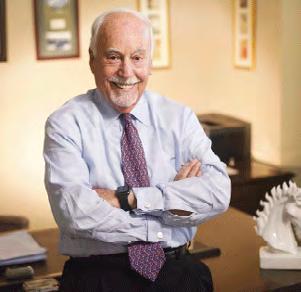
Submit Your Articles HCM Sales, Marketing & Alliance Excellence presented by HR.com May 2023 17
Tackling Human Capital Management Challenges Through Analytics And Metrics
CALLING ALL HR MARKETING GURUS - SHARE YOUR EXPERTISE WITH OTHERS!
Are you an expert in Marketing in the Human Capital space? If yes, you’re invited to submit articles for inclusion in our publication, HCM Sales, Marketing & Alliance Excellence! This publication helps Sales and Marketing professionals in the Human Capital space learn emerging trends to help them in their business and now you can share your marketing expertise with them! Check
Our readers are interested in a number of topics including:
● Marketing hacks for HR Solution Providers
● Building relationships with current and potential clients
● Tradeshow expo halls - best practices for ROI
● Branding and your online presence

● Aligning Marketing roles with your business growth strategy
● Marketing Tactics to increase ROI
● Martech Enablement
● Marketing Analytics
● How to define a “real lead” and how to count its sale value
● How to nurture stronger partnerships between marketing and sales
● Tips for working with influencers and analysts
● Market planning process
● How to build a brand
● How to win with PR
● How to use Social to drive brand recognition and sales
● Your approach to producing and disseminating meaningful thought leadership
● How marketing needs to evolve for success
Article submission deadline: 1st of each month 1
Kindly let us know if you’d be interested to feature your article in our magazine by emailing the editor at ddamodaran@hr.com. You can also review our submission guidelines by clicking here Also, if you are in marketing in the human capital space, we invite you to host a webcast for our HR Marketing Institute. For more details, please email Shelley Marsland-Beard at smarsland@hr.com
.
out our magazine here
Cultivating A Peaceful And Productive Culture: Embracing Conflict Is Key
Understanding the six core human desires
By Jamal Jivanjee, jamaljivanjee.com
There is an old adage that says, “Whatever we resist persists.” While many of us have a tendency to resist or avoid conflict, human resources (HR) professionals know that even the healthiest organizational cultures will see conflicts pop up between individuals and teams. What if it were possible for HR leaders, and their teams and the employees they work with to embrace conflict as a welcome opportunity for clarity and solutions? What if conflict could be utilized as a powerful opportunity for self-discovery? What if this kind of self-discovery could also be a potent window into seeing and understanding the motivations and desires of others? I would like to propose that knowing and understanding our own core desires, as well as the desires of others with whom we may be in conflict, is actually the key to effective leadership, peace, and productivity.
Labels & Conflict
I have come to discover that all conflicts, be it internationally among world powers, among groups within societies, within companies between management and employees, or even in families and personal
relationships, have the exact same root causes. If we can address the root of conflict within us, we can solve it at every level.
Within each of our brains is a complex survival mechanism that has evolved over many millennia called the reticular activating system. This system is responsible for the primitive “fight or flight” mechanism that is activated each time we feel threatened in some way. When the fight/flight operating system is activated, the brain begins to scan our environment through the lens of danger. When the threat is perceived, the brain identifies (labels) the threat, and a reaction to either attack or flee the threat is made.
This fight/flight mechanism has been necessary for humanity to temporarily survive hostile environments throughout our evolution. In the workplace, however, this survival mechanism rarely brings about optimal outcomes for anybody. HR leaders are uniquely positioned in the organization to model and facilitate better ways to handle conflict. Let us take a brief look at the mechanics of how conflicts develop.
Submit Your Articles HCM Sales, Marketing & Alliance Excellence presented by HR.com May 2023 19
When one party feels offended or threatened, a strong biological tendency to identify the threat activates in the brain in which the other person begins to be seen through a label of judgment. Oftentimes, this is subtle and unconscious. Once this subtle identification of the other occurs in the mind, communication with them begins to change and eventually break down.
Once communication suffers, fertile ground now exists for psychological rumination and fear to cultivate in the depths of the imagination. This forms a new lens through which the other is viewed as the source of our problem. Without mitigation we are at risk of labeling the other party further in some way (“evil,” “stupid,” “dangerous,” etc.).
As fear of the labeled other takes root in our mind, we devolve back into a primitive fight or flight state of mind. This is when reactive strategies of fight or flight begin to be imagined and prepared for. As this occurs, conflict becomes almost inevitable. While the fight or flight mechanism may have been necessary for our survival in ancient times when daily survival was under constant threat, it is a detriment to our ability to
partner together in relationships, companies, and as a society in modern times.

The Six Core Human Desires & Understanding
Renowned life coach Anthony Robbins has done much work in the field of identifying the six fundamental human needs that are found to be consistent regardless of ethnicity, socioeconomic status, gender, age, etc. According to Robbins, the six essential core desires of human beings are:
1. Certainty- A sensation and awareness of being grounded and safe.
2. Uncertainty- A sensation of freedom, newness, and possibility.
3. Significance- A sensation of importance, competence, and self-worth.
4. Love and Connection- A sensation of intimate connection and acceptance.
5. Growth- A sensation of personal evolution and development.
6. Contribution- An altruistic desire to make the world a better place and add value for the betterment of society.
Submit Your Articles HCM Sales, Marketing & Alliance Excellence presented by HR.com May 2023 20 Cultivating A Peaceful And Productive Culture: Embracing Conflict Is Key
I have observed (both from my own lived experience and also with the folks that I have worked with in a life coaching capacity) that when a person feels they are moving forward in all six of these motivations, they will feel that they are living a deeply fulfilling life.
The first four of the six human motivations function, much like an operating system, operate as a computer. When the operating system is intact, the computer can function to the level of its capability. When one or more of the first four human desires are challenged or threatened in some way, our “operating system” becomes destabilized, and the fight or flight system is activated in the brain. This experience is what is commonly known as a “trigger.”
Applying the Six Human Desires to Conflict
In my work as a life coach, I have observed that whenever a person can recognize what their own core motivations are, they gain the ability to see that the distress they may be feeling in a situation is actually connected to the perception of lack in one or more of their own core desires. This often leads to the understanding that the threat is not external in the way that it may initially seem. This awareness creates an opportunity for internal introspection and processing of emotion, as opposed to immediate reactive conflict with another.
After more than twenty years of working with people in various capacities, I have yet to witness a conflict or experience a conflict that was not directly associated with one or more of the core human desires being affected in some way.
Several years ago, I was employed as a corrections officer in a state penitentiary for convicted felons. There was a particular inmate that was transferred to my cell block that was known for being belligerent and violent toward staff. Let us call him Frank for discussion purposes. During each shift, the corrections officer on duty would conduct a log of the shift and would mark in the log book with a bright yellow highlighter any inmate name and cell that was a problem during their shift so that the following shift
officer would be aware. Each shift, I would see that Frank’s behavior was highlighted by the previous shift officer.
Because of Frank’s violent reputation, staff members would treat him in a hostile manner anticipating his belligerent behavior. Frank took this personally and would also anticipate harsh treatment from the staff in anticipation of the disrespect that he felt he would receive. What resulted was a predictable conflict between Frank and the staff on a daily basis.
One day during my shift, I reflected on what I had been learning regarding human behavior. I had come to learn that nothing is truly personal when dealing with conflict with others, as most people are often simply projecting their own insecurities onto others. I realized that Frank felt disrespected in life (insignificant), and as a result, he projected this same sense of insignificance toward everyone he interacted with. His third core human desire (recall the list from Robbins) was not being met, and this was how that sense of lack manifested. I realized that when Frank treated me in an insignificant and disrespectful manner, it had nothing to do with me in reality, but with his own anger and pain stemming from his own sense of insignificance.
Before I interacted with Frank that day, I took time to ground myself in my own internal sense of significance and security. As I approached Frank, he was his usual belligerent self. It felt different to me that day, however. I noticed a patient and non-reactive presence within me. As a result, I began to engage him in conversation. Simple questions at first just to hear more about his complaints, then more probing questions to understand him better. This led to a surprising conversation about his life. The entire cell block became pin-drop quiet as everyone was in disbelief that Frank was engaged in respectful and open conversation with a corrections officer who was listening without judgment or advice. Surprisingly to me, I enjoyed the conversation and even felt a measure of empathy for him as I could relate to his own struggles in life. I concluded that Frank was not so different than any of us.
Submit Your Articles HCM Sales, Marketing & Alliance Excellence presented by HR.com May 2023 21
Cultivating A Peaceful And Productive Culture: Embracing Conflict Is Key
I will never forget what happened the following day, however. When I came into work, the previous outgoing officer gave me a rundown of his shift. When he showed me his shift log book, he said this:
“Strangely, there are no yellow marks for any inmate today. Not even Frank. That is a first. Not sure what has gotten into him”.
Amazingly, Frank remained calm on my shift that evening, and he never received a yellow highlight mark from any shift officer after that. It was not long before his security status lowered, and he was transferred to a lower security part of the prison.
This was a tremendous transformation in behavior in a short period of time for one simple reason. I reflected back to Frank what he needed the most. A sense of significance. This is a core human desire that we all have.
Think about various conflicts that you have had or facilitated with individuals and teams. When you reflect upon them, can you identify what core human desires you or the other party might have been struggling with? If you consider the conflicts you are currently navigating, what core human desires do you think might be at play? When you think about the conflict through that lens, what might you do differently to bring people together and come to a solution?

The gasoline of any conflict, so to speak, is the faulty perception that the other is fundamentally different
than we are. Whenever we begin to see that the other party has the same desires for certainty, freedom, significance, and acceptance that we have, the ability to castigate or demonize them is taken away leading to understanding and eventually empathy. This is the beginning of the end of the conflict.
For leaders in any capacity, it is essential that we understand what drives and motivates those we seek to influence and serve. Our ability to lead and connect with those we are serving will be in direct proportion to our ability to understand their core motivations. The deeper the connection with those we are serving, the more influence we will gain to create a truly healthy, productive, and inclusive culture.
Jamal Jivanjee is a best-selling author, podcaster, and full-time life coach. As an author with over twenty years of experience working with people in various stages of personal struggle and challenges, after traveling to many cultures around the globe, Jamal has discovered the common roots of human suffering along with the sustainable solutions required to help people become liberated and empowered. Jamal is passionate about serving individuals, couples, and groups on the path toward enlightenment, wholeness, and liberation.
Would you like to comment?

Submit Your Articles HCM Sales, Marketing & Alliance Excellence presented by HR.com May 2023 22
Cultivating A Peaceful And Productive Culture: Embracing Conflict Is Key
Attitude Over Aptitude
Customer contact employees must possess and practice a positive attitude
By John Tschohl, Service Quality Institute
Asa business owner or executive, what is the most important thing you look for when hiring an employee? Is it a resume that is replete with degrees and an impressive list of previous jobs or positions?
All too often, those are what employers are looking for.
I suggest it should be something else. Sure, you want employees who are intelligent, but there is something more you should be looking for. In a nutshell, you should look for attitude over aptitude. Why? Because you can train people on the skills they need if they want to work for you, but it is almost impossible to change people’s attitudes.
Service leaders recognize the truth — and the importance — of that statement. Vernon Hill, the former CEO of Commerce Bank, Metro Bank London, and Republic Bank, summed it up this way: “If you don’t smile during the first interview, there won’t be a second
interview.” You would do well to put that principle in place at your company.
Customer contact employees must possess and practice a positive attitude that will make your customers feel welcome, and that will induce them to continue to do business with you. Those qualities are also important when it comes to building a team of employees who work well together and, in the process, drive your business to greater heights.
Most of us have worked with employees who should never be allowed to have personal contact with customers because they lack the ability to be engaging and helpful. While they might be exceptionally intelligent, they do not have what it takes to form connections with other people. Often described as nerds, they would much rather spend eight hours a day punching numbers or staring at a computer screen than interacting with other humans.
Of course, you must have products and services of exceptional quality at great prices, but when you combine that with employees who have great attitudes, customers will continue to come knocking at your door. The combination of those three things is critical to the success of your business.
Look at the customer service leaders in your industry and follow their lead when hiring employees. Southwest Airlines, which has more than 66,000 employees, hires only one out of every 45 applicants. It focuses as much on qualities, such as common sense and humor, as it does on the skills employees need to do the job, which is ensuring that travelers have a safe trip that includes exceptional service.
Southwest hires people to deliver unparalleled hospitality, and as a result, it has passionate loyalty among the 130 million customers it serves every year.
Submit Your Articles HCM Sales, Marketing & Alliance Excellence presented by HR.com May 2023 23
TOP PICK
When hiring employees, I highly recommend that you look for these attributes:
Smiles A smile goes a long way in sending a message that you care and that you welcome the business customers bring to you. It is a visual warm welcome.
Friendliness When a smile is combined with a helpful attitude and the use of a person’s name, it makes people feel important. It also builds trust and encourages customers to be open to advice
about your products and services — and to spend their money with you.
Communication skills Look for employees who communicate well with you during the interview. Body language says a lot, so pay attention to it. Do they make eye contact as you talk, or are they hugging their arms and staring at the ground, sending a message that they would rather be anywhere other than where they are at that moment? Eye contact is critical to good communication.
Personality Some people just naturally connect with others. Those are the people who smile as they walk through the door — greeting coworkers and customers as they do so — and who, in the process, put smiles on the faces of those they encounter.

Enthusiasm People who are excited about their lives, their work, and their relationships emanate an energy that is difficult to describe — but you will recognize it when you see it.
John Tschohl is the Founder and President of the Service Quality Institute . He is considered one of the world’s foremost authorities on all aspects of customer service and has written several books, including “Moving Up: A Step-by-Step Guide to Creating Your Success."
Would you like to comment?

Submit Your Articles HCM Sales, Marketing & Alliance Excellence presented by HR.com May 2023 24
Attitude Over Aptitude
Digitizing The Handshake: 4 Benefits Of Digital Business Cards
Making lasting connections
By Sharat Potharaju, Beaconstac
Ninety-five percent of professionals believe successful business relationships require face-to-face interactions. Yet because only 48% keep in touch with the people in their networks, everyone loses out on long-term relationships that may have major future benefits, like access to job opportunities, career advancements and gained knowledge.
So what is the missing link? You need a way to bridge the gap between in-person interactions and online connections. Enter the digital business card (DBC) — a way to “digitize the handshake.” Like traditional business cards, DBCs share vital information about an individual or business. However, DBCs deliver a unique omnichannel experience making a great first impression on job-seekers and other professionals.
Here are four ways human resources (HR) professionals can use DBCs to overcome missed
connections and enhance HR efficiency.
1. Share an Unlimited Amount of Information
Traditional business cards typically force you to work within a 3.5” x 2” content space. You must carefully choose what details to include because you cannot pack too many words on such small cardstock. With zero space constraints, a DBC allows you to share any information you want, like contact numbers, URLs (uniform resource locators), social media handles and more. For example, if you are seeking new employees, bring a DBC to job fairs or industry networking events to share links to your job postings.
2. Facilitate Instantaneous Information Sharing
Professionals often use editable QR codes for sharing DBCs. Someone simply scans the code to access and save your information on their mobile device
— no manually typing contact details or tucking a card away and hoping it does not get lost. You can embed QR codes on a paper card, social media post, website or email signature.
And because you can edit these codes, you never have to worry that you are sharing inaccurate information with prospective employees or anyone else. Editing details in real-time eliminates having to reprint changes or spend additional time, money and effort to redistribute updated business cards.
3. Connect Through More Channels
An attractive paper-based card loaded with compelling information may spur interest, but interest only goes so far. If physical business card recipients cannot conveniently respond to shared details, the card may join the nearly 90% of other business cards tossed within a week of receipt.
Submit Your Articles HCM Sales, Marketing & Alliance Excellence presented by HR.com May 2023 25
DBCs generate more online connections with a single click or screen tap. For example, a job seeker can retrieve your phone number instantly in a click-to-call manner. Professionals can access URLs, job postings and social links in the same way, which turns your DBC into an instant, two-way communication channel.

4. Evaluate interest and track professional engagement
Once traditional business cards leave your wallet, you cannot track and analyze engagement. DBCs, however, provide a wealth of knowledge once they are out in the world, including:
● Card scans received.
● Unique clients reached.
● Best- and worst-performing DBCs.
● Card engagement by location, time of day and device.
A DBC solution helps you monitor these metrics in real time. This way, you can easily determine card engagement data and optimize your networking efforts.
By 2027, the DBC market is estimated to reach $3.1 billion. However, nearly 80% of people have not taken advantage of this technology — yet. HR
professionals who embrace DBCs will be a step ahead in making lasting connections.
Sharat Potharaju is the Co-founder and CEO of Beaconstac, responsible for crafting the overall strategy and execution. Prior to his entrepreneurial career, Sharat spent a few years working in investment banking at Merrill Lynch in New York.
Would you like to comment?

Submit Your Articles HCM Sales, Marketing & Alliance Excellence presented by HR.com May 2023 26
Digitizing The Handshake: 4 Benefits Of Digital Business Cards
Balancing Autonomy And Expectations In Remote Teams

A few tips to follow
By Ayanna Kelly, The Rise Journey
Remote work is not going anywhere - we are headed into a new normal of what it means to “go to work”. Before we get any further, we have to acknowledge that remote work requires immense trust between employees and employers. Trust is crucial in remote work because the prevailing workplace structures are based on a capitalist model that treats workers like machines, mandating constant productivity. However, it is possible to break away from this model.
The new era of work is an opportunity for us to include more rest throughout the day and structure our work in a way that promotes creativity, and flexibility to have time to live. In 2022, U.S. Surgeon General Dr. Vivek Murthy identified workplace harmony as one of the pillars in his framework to address workplace well-being. The two basic human needs to achieve workplace harmony are autonomy and flexibility. Remote work is one way to provide the flexibility needed to advance workplace well-being. It helps that flexibility supports employee engagement and retention.
A Few Tips to Find the Balance:
● Throw away core hours. More and more organizations are globally distributed and can work effectively without requiring core hours or specific time to be “online”.
● Provide work phones or don’t require employees to have all the work apps on their personal devices. Create boundaries around when and where work needs to be done. Requiring employees to be available on their phones at all times crosses the boundaries between work and rest. It also sends the message that you expect employees to respond and be alert at all hours of the day.
Submit Your Articles HCM Sales, Marketing & Alliance Excellence presented by HR.com May 2023 27
TOP PICK
● Set clear expectations. It may sound simple, but when expectations are clearly established, employees can have the autonomy to meet those expectations when it suits them within reason. The lack of clear expectations causes conflict and the need to control how employees are spending their time.
● Allow space for flexible workday structures. Our brains function on a specific rhythm, and eight hours of meetings do not support that. Encourage breaks throughout the day and respect the boundary. If employees have designated small breaks on their calendar - do not ask to schedule something during that time unless it is an emergency (oftentimes, it is not).
● Be the example and set the tone. If you are a leader or manager, step away when you say you are. If you are checking in during your paid time off (PTO) or a doctor’s appointment, you are letting your team know that truly stepping away is not possible.
Bottom line - Trust your employees to do their work even if it is not in a “traditional” way. Extend grace to everyone, not just the people you perceive to be high performers. Everyone deserves to work in a way that honors who they are as whole people.


Recommended Resources:
● For Real Productivity, Less is Truly More
● Office of the Surgeon General - Framework for Workplace Mental Health & Well Being
● Avoid Burnout and Increase Awareness Using Ultradian Rhythms
● The Happiness Lab with Dr. Laurie Santos Burnout and How to Avoid It
Would you like to comment?
Submit Your Articles HCM Sales, Marketing & Alliance Excellence presented by HR.com May 2023 28
Balancing Autonomy And Expectations In Remote Teams
Ayanna Kelly is a proud Afro-Latina, mom, wife, and disabled veteran. She is currently the HR & DEI Product Manager at The Rise Journey for their project Rise with OPHR.



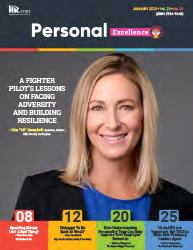







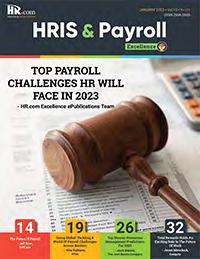
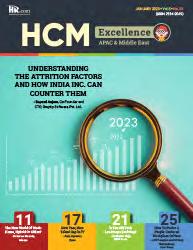
Publications 13 Targeted Publications to Reach Your Audience Informing, Educating, Enlightening and Assisting HR professionals in their personal and professional development, the Excellence series offers high-quality content through the publications! Like to submit an article? Use our online submission form or for more information go to www.hr.com/ExcellencePublications

For more information: Phone: 1.877.472.6648 | Email: ePubeditors@hr.com | www.HR.com/epubs Leadership Excellence May 2023










 Debbie Mcgrath Publisher, HR.com
Deepa Damodaran Editor, HCM Sales, Marketing & Alliance Excellence
Debbie Mcgrath Publisher, HR.com
Deepa Damodaran Editor, HCM Sales, Marketing & Alliance Excellence















 Dave Ulrich
Julie Winkle Giulioni
Author, Virtual /Live Keynote Presenter, Inc.’s Top 100 Leadership Speakers
Dr. Beverly Kaye CEO, BevKaye&Co.
Dave Ulrich
Julie Winkle Giulioni
Author, Virtual /Live Keynote Presenter, Inc.’s Top 100 Leadership Speakers
Dr. Beverly Kaye CEO, BevKaye&Co.






































